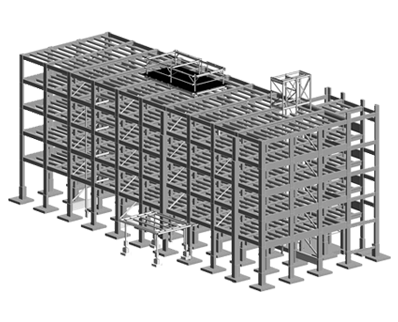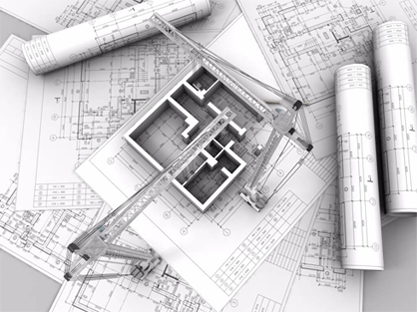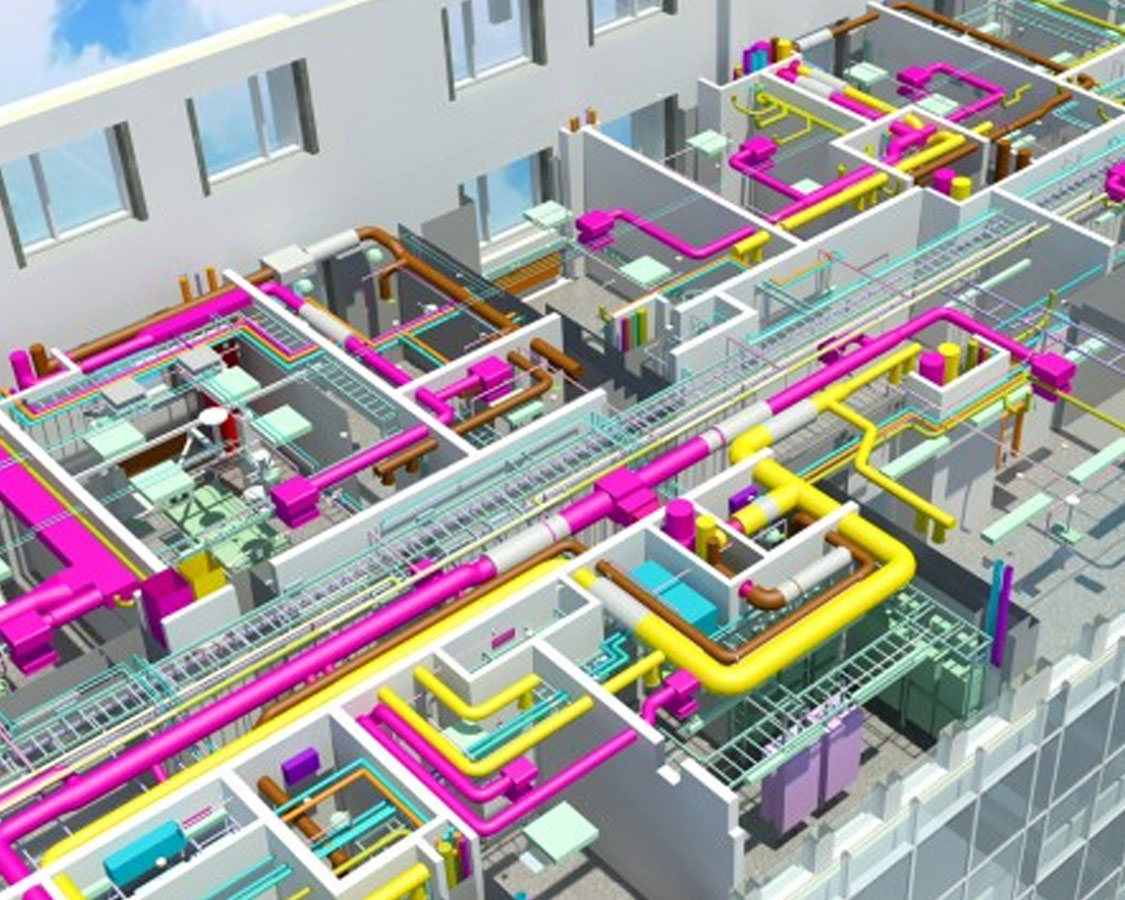We focus on accurately curating all your BIM Models, Components, and Data.
Building Information Modeling (BIM) facilitates creating and managing information models in a unique data environment that includes both graphical and non-graphical data sets. As the project progresses, the information related to the 3D Model grows. The most accessible approach to describe BIM dimensions is additional information or details given to a model to aid the project team in comprehending the Model. These are precise procedures for incorporating various data into an information model. You can better understand the project by including more dimensions of information. For example, the degree of development standards demonstrates the 3D Model's geometry, specifications, and related data. On the other hand, BIM Dimensions are additional data or information kept within a model and include costs, time, and other elements.
Simulation, Scheduling, and Modelling
4D BIM Modelling and Constrcution Plan Scheduling
4D BIM is the first step of BIM modelling after the 3D BIM stage. In a nutshell, a 4D model is a 3D model with temporal data. It helps to visualise the construction process by displaying the logistics, location of the materials, and labour force. Creating the structure resembles an animated film that identifies workflow conflicts and streamlines the designers' work.
4D BIM Modelling and Constrcution Plan keep all the building's components from clashing and aids in easy coordination. The company experts keep an eye on the project, identify every missing or unnecessary detail, and either add or remove it. A 4D BIM model adds a layer of information to a construction project. The following are the main advantages of 4D BIM Modeling :
- Improved scheduling and planning of all operational phases
- Capacity to prevent potential conflicts and project failures
- It enhances the quality of the planning for the development site.
- The stakeholders benefit from strong communication and collaboration with well-defined timelines.


5D BIM Services- Quantity Surveying
Creating reliable quality for reliable tomorrows.
The new era of construction cost estimation is 5D BIM modelling. Combining a 3D model, a schedule plan, and a construction cost estimate is the duty of a 5D BIM model. The Model's purpose is to offer construction funding and to monitor the expenses during the construction process as needed for precise computation. Simple tools like Autodesk AutoCAD and other CAD applications can provide an overall digital model that meets the demands of contemporary clients. We optimise construction with BIM Sustainability and BIM Energy Analysis. BIM 5D Modelling helps get real-time insight into energy operations inside buildings. Here are the significant benefits of 5D BIM Services:
- Detailed Quantity Take-Offs.
- Accurate Cost Estimation & Forecasting.
- Improved stakeholder collaboration, a quicker decision-making process, help with immediate material procurement.
Optimize Project Phases with 4D BIM Modeling Services in Canada
Silicon EC Canada specializes in 4D BIM Modeling Services and 4D BIM Consultants Services. We integrate time-based data into 3D models that show a gradual projection of development work. As a leading 4D BIM Consultancy Services Firm in Canada, we help AEC professionals with risk management and critical decision-making.
Our 4D BIM Services validate that the 4D BIM models we develop provide interactive communication to clients to see how a structure will look at different development checkpoints. We also offer 4D Revit BIM Services that come to life by harnessing Revit’s functionalities to detect and resolve potential bottlenecks and conflicts.
Unlock Accurate Budgeting with 5D BIM Modeling Services in Canada
Global engineers and architects consult us for 5D BIM Services to incorporate budget and cost prediction tracking into BIM models to view the project’s financials. We link cost data directly into 3D and 4D models so that project managers can instantly evaluate the financial repercussions of design modifications or schedule adjustments.
Our 5D BIM Estimation Services validate that the project budget is optimized to obtain value-for-money outcomes and cost forecasting is improved. Reigning as the best 5D BIM Company made us highly responsible, pushing us to advance 5D technology and set new BIM integration and project management standards.
Lifecycle Management and Sustainability with 6D BIM Modeling Services in Canada
Silicon Engineering Consultants Canada understands the importance of smooth development, facility operation, and accountability for the project's lifecycle. We deliver 6D BIM Services to help builders manage production and on-site development phases, maintenance cycles, and sustainability goals. Our team designs models that lead to eco-friendly structural development.
In the modern age, carbon footprint has been a nightmare for the world's population, so with our 6D Drawing Services, we put our tiny foot forward to provide detailed insights into energy usage and implement environment-conscious solutions. As a strategically sound Building Information Modeling Services firm, we consistently optimize our practicalities to impart BIM 4D 5D And 6D BIM Benefits into client projects for a successful and endearing structural win.

6D BIM Services -
Asset Data and Functions
6D BIM entails incorporating additional pertinent data supporting facility management and operation to improve business outcomes. Our firm utilises the most remarkable BIM 6D technologies throughout the building process. Autodesk Revit is one of the best choices for data acquisition and operation. The software creates an electronic building model that displays external impacts on any project aspect. Sustainability is a critical component of 6D BIM, often known as Integrated BIM. It serves as a manual for the operations and maintenance of the building and serves as an as-built model for the customer. In actuality, 6D BIM technologies provide sustainable practices with the following advantages :
- First, making choices is quick and straightforward as a result.
- Second, 6D BIM facilitates a thorough examination of the project's operational and financial elements.
- Aids in the planning of any maintenance period.

Are you looking for a BIM Service provider?
At each project stage, we provide our clients with a full range of integrated, value-driven construction consulting services that use cutting-edge technology. Our capacity to integrate critical professional skills and BIM into a structured multi-disciplinary team ensures the quality of our output.
We evolve familiarity with BIM dimensions like 2D, 3D, 4D, and 5D to completely comprehend a building project since they enrich the data of a construction model. Increasing the data in a construction model will enable us to understand better the project's delivery schedule, cost, and upkeep requirements.
Frequently Asked Questions
-
What are 4D, 5D, and 6D BIM?
-
What is the BIM Process?
A construction project's information is created and managed using BIM throughout the project's life cycle. The method includes forming a coordinated digital description of each component of the generated thing using the appropriate technology. This digital description most often combines structured data with information-rich 3D representations, such as details about the product, the execution, and the handover.
Describe 9D BIM.
Lean construction, or 9D BIM, is a dimension of BIM that optimises and streamlines every step involved in putting a project into action through process digitisation. For example, on a building site, poor planning can cause project delivery delays, which raise the initial budget.
-
What extra features do 4D and 5D BIM offer?
Each BIM dimension's corresponding informational value increases the system's effectiveness. For example, while 5D BIM focuses more on cost estimation and budget analysis, 4D BIM provides timing, schedule, and duration data. Additionally, the 6D BIM dimension discusses creating autonomous and energy-efficient values.
-
How do the drafters of Silicon EC implement 4D BIM?
Here are the five recommendations for using 4D BIM for the construction schedule :